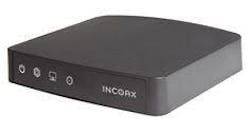Multigigabit modem operates over existing coaxial infrastructure

To meet demand from increasing numbers of US telecom and fiber operators now offering multigigabit services at data rates of 2 Gb or more, InCoax Networks has introduced a new series of multigigabit network termination equipment (NTE) designed to simplify property deployments.
InCoax Networks' MoCA Access NTE modems deliver 2.5 Gbps bandwidth via fiber access extension technology. The A251 NTE is a type of modem that connects the customer premises equipment (CPE) to the operator’s network. The modem is available in 15 versions supporting five different MoCA [Multimedia over Coaxial Alliance] Access bands, capable of co-existence with legacy TV services and extended range offerings.
The InCoax A251 NTE platform delivers 2.5 Gbps symmetrical data rates, can be self-installed by the customer, and auto-configures at start-up. The InCoax technology is based on MoCA Access 2.5 specifications, and is positioned as a high performance, future-proof, reliable, cost-effective fiber access and fixed wireless access (FWA) extension technology for brownfield multi-dwelling units (MDUs).
InCoax contends that the A251 NTE modem helps to reduce installation time, increases take-up rate, and allows communications service providers to realize multigigabit symmetrical broadband speeds over a property's existing coaxial infrastructure.
Alf Eriksson, chief product and portfolio officer at InCoax Networks, explains:
“With the InCoax MoCA Access 2.5 portfolio of products, we want to support operators targeting to gain market share in the competitive multigigabit market. The A251 modem will be an important complement to our existing portfolio of NTE for Europe and North America. 2.5 Gigabit symmetrical broadband performance over existing property coaxial infrastructure to a single user, will cover consumer market demand for years to come and constitute a fast-to-install and cost-effective alternative to full-fiber solutions.”
InCoax notes that the multigigabit broadband market is only expected to grow, with Omdia's analysts reporting that 25 US operators offered multigigabit speeds in 2022; and, similarly, the Fiber Broadband Association predicting that by 2030 the downstream and upstream data rates inside the home will grow to 2 Gbps.
In a recent interview with Smart Buildings Technology editorial staff on the topic of ICT connectivity and proptech convergence trends in smart buildings, AllBridge CIO Matt Koch made remarks illustrative of the way many properties are now repurposing existing coaxial communications infrastructure.
"What has been interesting for us are some of the adaptations to switch SFPs with coax cable," observed Koch. "Now there are switch SFPs that you can hook a standard, F- barrel connector onto, and if you have end-to-end connectivity, suddenly you've got Ethernet over, frankly a cabling plant that you've probably abandoned or are no longer worried about, with the move to IPTV and so on. People are finding new ways to repurpose old coax in some cases."
The following video from InCoax Networks illustrates MoCA's implementation of Fiber to the Extension Point (FTTep) architectures leveraging the company's technology.
For more news, projects, and profiles in the smart buildings ecosystem, subscribe to the SBT newsletter and follow us on LinkedIn, Twitter, and Facebook.
